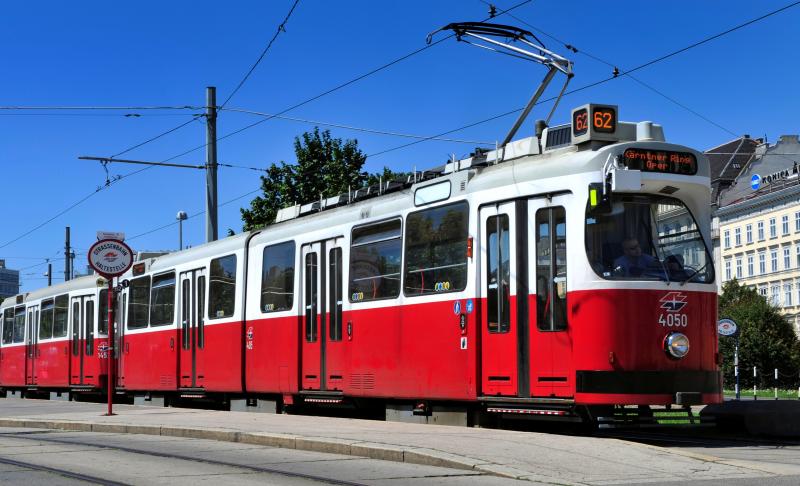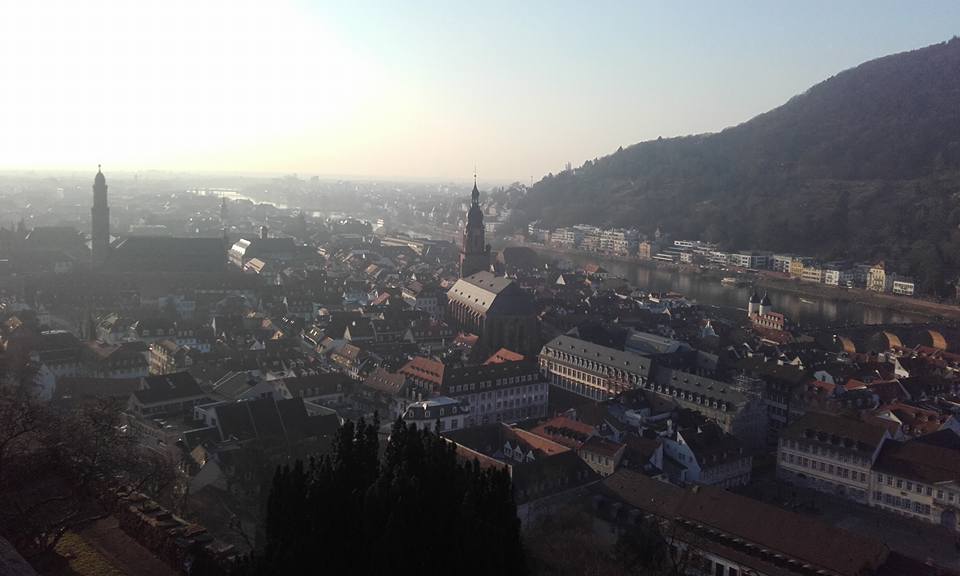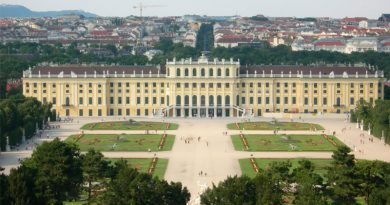LingoMap: Travel and Transport
Vienna has one of the best public transportation systems in the world. The city has been voted eight times as the most livable city in the world, and one of the many reasons for that is Vienna’s brilliant öffentliche Verkerhsmittel, or Öffis as their sometimes called in Austria. In my opinion public transport in Vienna is miles better than anything I’ve encountered in the UK. Vienna itself is a brilliant place to travel to other destinations from as well, with Prague, Budapest and Bratislava only a relatively short train journey away and other places like Munich, Venice or Berlin also reachable if you can handle a somewhat longer journey. But before the excitement of international travel, wie fahrt man durch Wien?

The thing I think I love most about the Öffis in Vienna is how easy they are to use. You just jump on the tram, bus or train you want and it will take you where you need to go. There’s no faffing with change, no paying the driver for a Fahrkarte, and never a queue to get on. Hop on and hop off, einfach. Admittedly like every form of public transport they can become rather full at rush hour and you’re just left with Stehplätze. At least that’s better than being left in the rain after the driver tells you you’ve not got the correct change, as has happened to me on more than one occasion in the UK! Whilst it’s nice and easy to jump on and off and all types of transport except the old style trams are barrier free and easy to get on with a wheelchair or pram, you still of course need a ticket. An Einzelfahrtkarte will cost €2,50 and is good for one journey whereas a Wochenkarte would cost €16,20 and is gültig until the following Monday after it was purchased. Eine Monatskarte kostet €48,20, whereas a Jahreskarte lasts for 12 months and costs €30 and works like a subscription, much like Netflix for the buses. Travelling without a ticket, however, can sometimes be the most expensive way to travel and is called Schwarzfahren. If you are travelling without a valid ticket then be careful; they really do count the hours and minutes. Ticket inspections are infrequent but are completely random and the inspectors are often not wearing uniforms. Usually the inspectors like to stand at either ends of a carriage and declare loudly “Fahrschein Kontrolle” at which point everybody rummages through their things looking for their ticket. If you’re unlucky enough to be erwischt ohne gültige Fahrkarte then you will be punished with a fine of €103. As the posters in all the train stations say: Schwarzfahren ist die teuerste Variante, mit den Wiener Linien unterwegs zu sein! In terms of the different options for getting around the city, you’re almost spoilt for choice. There’s of course der Bus as is to be expected but also the U-Bahn (Unterbahn, an underground train system) the S-Bahn (Schnellbahn, an above ground train system) and the Straßenbahn which Austrians like to refer to as die Bim because of the sound the bell makes to warn people to get off the track, though in my opinion it’s a bit more of a klang sound.

Despite Austria being a landlocked country, die schöne blaue Donau allows for some travel by boat as well. The Danube is the longest river in Central Europe and flows through four different national capitals as well as 10 different countries –can you name them all? It starts in the Schwarzwald in Southern Germany and flows through Austria and South Eastern Europe before ending in the Black Sea. Boat trips run daily from central Vienna to nearby Bratislava and some cruises even allow you to travel from Germany all the way to the Black Sea! The river really plays an important role in this part of the world with it not only forming the border of the Roman Empire but also allowing trade between nations and fertilizing the fields and valleys it passes through. Perhaps surprisingly parts of Germany, Austria and Hungary are very productive wine regions and whilst Austrian wine isn’t quite as famous as French or Italian counterparts in my opinion it’s just as special.

Studying abroad really is a great opportunity to travel around and see the world and in my case I couldn’t pass up the chance to explore some of Austria’s large neighbor Germany. I did my research and found it was possible to buy an Interrail ticket that would allow me to travel on any train in Germany for 6 chosen days within a month –quite the ticket! This ticket allowed me to travel by train from Berlin to Leipzig, Frankfurt, Mannheim, Würzburg, Regensburg and Munich. All in all I was travelling and living out of a back pack for 21 days but I was able to see so much of Germany that I can fully recommend giving an Interrail trip a try. I was lucky to be able to book a very cheap flight from Vienna to Berlin and from there I would travel south through Germany by train stopping for a few days at a time in a city and staying with a local host found through the website Airbnb and then later getting a bus home from Munich to Vienna. I had planned in advance a few extra days in some places to be able to make day trips out to nearby towns that I thought would be worth visiting. In addition to the seven cities I was able to stay overnight in, I managed to visit Worms, Heidelberg and even a day trip to Strasbourg in France making a total of 10 cities in 21 days! Whilst it was a bit a daunting at times the opportunity to see echtes Deutschland and meet echte Deutsche made it an unforgettable experience. I would recommend studying abroad to anyone who has the chance, the opportunity to meet new people and see new places is invaluable.



